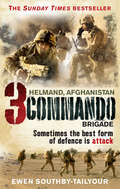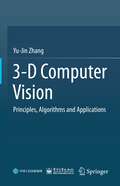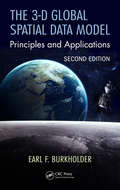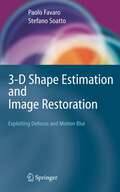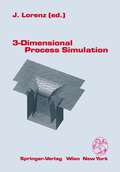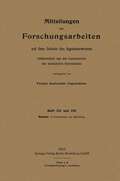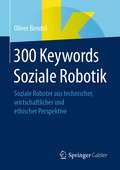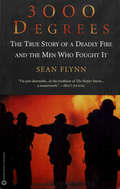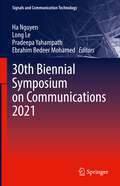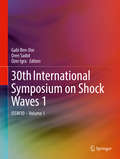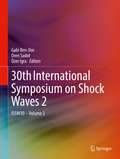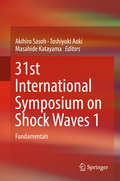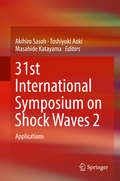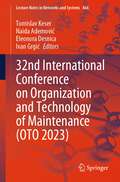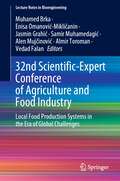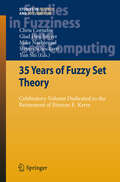- Table View
- List View
3 Commando Brigade: Helmand Assault
by Ewen Southby-Tailyour'The 3 Commando Brigade's six month deployment in Helmand Province was among the finest pieces of soldiering I have come across' General Sir Richard Dannett, Chief of General StaffIn October 2006, the Royal Marine Commandos took up their six month tour of duty in war-torn Helmand Province, southern Afghanistan - the toughest and hottest war zone on earth. After the tactical retreat of their predecessors, the Paras, the Marines knew they would have to take a different approach to have any chance of success. So they took the war to the enemy. Roving and aggressive, the Commandos forced the insurgent Taliban on to the back foot. As a result, they were involved in daily fire fights of an intensity not encountered by British troops since North Korea.3 Commando Brigade is a thrilling first-hand account of that dogged, heroic pursuit of the Taliban by the ordinary Marines, sailors and soldiers responsible. It is a story of valour, fortitude, supreme physical and mental fitness, and unrivalled professionalism under the most testing of circumstances. The account explodes from the first page with Operation Glacier, a graphic, no-holds-barred account of a Commando attack on a key Taliban base south of Garmsir - a battle that ends with the dramatic recovery of a Corporal's body from alongside the fort by Apache helicopters. From this opening salvo the action never lets up, offering a startlingly honest account of the war in Afghanistan as told by the junior officers, corporals and marines on the ground.
3-D Computer Vision: Principles, Algorithms and Applications
by Yu-Jin ZhangThis textbook offers advanced content on computer vision (basic content can be found in its prerequisite textbook, “2D Computer Vision: Principles, Algorithms and Applications”), including the basic principles, typical methods and practical techniques. It is intended for graduate courses on related topics, e.g. Computer Vision, 3-D Computer Vision, Graphics, Artificial Intelligence, etc. The book is mainly based on my lecture notes for several undergraduate and graduate classes I have offered over the past several years, while a number of topics stem from my research publications co-authored with my students. This book takes into account the needs of learners with various professional backgrounds, as well as those of self-learners. Furthermore, it can be used as a reference guide for practitioners and professionals in related fields. To aid in comprehension, the book includes a wealth of self-test questions (with hints and answers). On the one hand, these questions help teachers to carry out online teaching and interact with students during lectures; on the other, self-learners can use them to assess whether they have grasped the key content.
The 3-D Global Spatial Data Model: Principles and Applications, Second Edition
by Earl F. BurkholderTraditional methods for handling spatial data are encumbered by the assumption of separate origins for horizontal and vertical measurements, but modern measurement systems operate in a 3-D spatial environment. The 3-D Global Spatial Data Model: Principles and Applications, Second Edition maintains a new model for handling digital spatial data, the global spatial data model or GSDM. The GSDM preserves the integrity of three-dimensional spatial data while also providing additional benefits such as simpler equations, worldwide standardization, and the ability to track spatial data accuracy with greater specificity and convenience. This second edition expands to new topics that satisfy a growing need in the GIS, professional surveyor, machine control, and Big Data communities while continuing to embrace the earth center fixed coordinate system as the fundamental point of origin of one, two, and three-dimensional data sets. Ideal for both beginner and advanced levels, this book also provides guidance and insight on how to link to the data collected and stored in legacy systems.
The 3-D Global Spatial Data Model: Principles and Applications, Second Edition
by Earl F. BurkholderTraditional methods for handling spatial data are encumbered by the assumption of separate origins for horizontal and vertical measurements, but modern measurement systems operate in a 3-D spatial environment. The 3-D Global Spatial Data Model: Principles and Applications, Second Edition maintains a new model for handling digital spatial data, the global spatial data model or GSDM. The GSDM preserves the integrity of three-dimensional spatial data while also providing additional benefits such as simpler equations, worldwide standardization, and the ability to track spatial data accuracy with greater specificity and convenience. This second edition expands to new topics that satisfy a growing need in the GIS, professional surveyor, machine control, and Big Data communities while continuing to embrace the earth center fixed coordinate system as the fundamental point of origin of one, two, and three-dimensional data sets. Ideal for both beginner and advanced levels, this book also provides guidance and insight on how to link to the data collected and stored in legacy systems.
3-D Shape Estimation and Image Restoration: Exploiting Defocus and Motion-Blur
by Paolo Favaro Stefano SoattoIn the areas of image processing and computer vision, there is a particular need for software that can, given an unfocused or motion-blurred image, infer the three-dimensional shape of a scene. This book describes the analytical processes that go into designing such software, delineates the options open to programmers, and presents original algorithms. Written for readers with interests in image processing and computer vision and with backgrounds in engineering, science or mathematics, this highly practical text/reference is accessible to advanced students or those with a degree that includes basic linear algebra and calculus courses.
3 Degrees More: The Impending Hot Season and How Nature Can Help Us Prevent It
by Klaus WiegandtThis open access book describes in detail what life on this planet would be like if its average surface temperature were to rise 3 degrees Celsius above the preindustrial level. On this basis, the book argues that it is imperative to keep this temperature rise below 2 degrees Celsius. It then lays out a detailed plan of what politically feasible, cost-effective measures should now be taken to achieve this goal. In this context, the book provides detailed discussions of climate finance, climate education and nature-based solutions. The book has been translated into English from the original German version published in 2022, and contains an original foreword and preface.
3-Dimensional Process Simulation
by J. LorenzWhereas two-dimensional semiconductor process simulation has achieved a certain degree of maturity, three-dimensional process simulation is a newly emerging field in which most efforts are dedicated to necessary basic developments. Research in this area is promoted by the growing demand to obtain reliable information on device geometries and dopant distributions needed for three-dimensional device simulation, and challenged by the great algorithmic problems caused by moving interfaces and by the requirement to limit computation times and memory requirements. A workshop (Erlangen, September 5, 1995) provided a forum to discuss the industrial needs, technical problems, and solutions being developed in the field of three-dimensional semiconductor process simulation. Invited presentations from leading semiconductor companies and research Centers of Excellence from Japan, the USA, and Europe outlined novel numerical algorithms, physical models, and applications in this rapidly emerging field.
3-Dimensional VLSI: A 2.5-Dimensional Integration Scheme
by Yangdong Deng Wojciech P. Maly"3-Dimensional VLSI: A 2.5-Dimensional Integration Scheme"elaborates the concept and importance of 3-Dimensional (3-D) VLSI. The authors have developed a new 3-D IC integration paradigm, so-called 2.5-D integration, to address many problems that are hard to resolve using traditional non-monolithic integration schemes. The book also introduces major 3-D VLSI design issues that need to be solved by IC designers and Electronic Design Automation (EDA) developers. By treating 3-D integration in an integrated framework, the book provides important insights for semiconductor process engineers, IC designers, and those working in EDA R&D. Dr. Yangdong Deng is an associate professor at the Institute of Microelectronics, Tsinghua University, China. Dr. Wojciech P. Maly is the U. A. and Helen Whitaker Professor at the Department of Electrical and Computer Engineering, Carnegie Mellon University, USA.
30 Kesselbleche mit Rißbildung: Mitteilungen aus der Materialprüfungsanstalt der Kgl. Technischen Hochschule Stuttgart
by Richard BaumannDieser Buchtitel ist Teil des Digitalisierungsprojekts Springer Book Archives mit Publikationen, die seit den Anfängen des Verlags von 1842 erschienen sind. Der Verlag stellt mit diesem Archiv Quellen für die historische wie auch die disziplingeschichtliche Forschung zur Verfügung, die jeweils im historischen Kontext betrachtet werden müssen. Dieser Titel erschien in der Zeit vor 1945 und wird daher in seiner zeittypischen politisch-ideologischen Ausrichtung vom Verlag nicht beworben.
300 Keywords Soziale Robotik: Soziale Roboter aus technischer, wirtschaftlicher und ethischer Perspektive
by Oliver BendelDas vorliegende Nachschlagewerk sammelt und erläutert Begriffe rund um Soziale Robotik und Automatisierung. Es ist für alle geeignet, die einen schnellen Einstieg in das Gebiet suchen und sich besonders für Fragen des Zusammenspiels von Mensch und Maschine sowie Fragen der Ethik in diesem Bereich interessieren. In über 300 übersichtlichen Beiträgen werden die Grundlagen und Entwicklungen leicht verständlich erläutert.
3000 Degrees: The True Story of a Deadly Fire and the Men Who Fought It
by Sean FlynnThe unforgettable and heartbreaking true story of the firemen who bravely fought "the perfect fire".
30th Biennial Symposium on Communications 2021 (Signals and Communication Technology)
by Ha Nguyen Long Le Pradeepa Yahampath Ebrahim Bedeer MohamedThe book presents the proceedings of the 30th Biennial Symposium on Communications 2021 (BSC21), a prestigious international research conference in communications, information theory, and signal processing. Started in 1962 by Queen’s University, Canada, the Symposium is now presented by the Canadian Society of Information Theory. Its 30th edition was hosted virtually by The University of Saskatchewan and held in Saskatoon from June 28 to 30, 2021. Topics include Communication and Information Theory, Coding and Signal Processing for Communications, and Multiple Antenna Systems and Cooperative Communications.
30th International Conference on Organization and Technology of Maintenance: Proceedings of 30th International Conference on Organization and Technology of Maintenance (OTO 2021) (Lecture Notes in Networks and Systems #369)
by Hrvoje Glavaš Marijana Hadzima-Nyarko Mirko Karakašić Naida Ademović Samir AvdakovićThis book promotes an interdisciplinary approach to maintenance, through the presentation of practical and theoretical research in the field of electrical, civil, and mechanical engineering. The goal is to raise the level of maintenance knowledge, taking into account the continuous advancement of engineering and technology in all spheres of economy, infrastructure, and public services. This book contains papers presented at the 30th International Conference on Organization and Technology of Maintenance (OTO 2021), and the conference was held on Josip Juraj Strossmayer University of Osijek, Faculty of Electrical Engineering, Computer Science and Information Technology Osijek on 10-11 December 2021. The book brings 36 original papers written by authors from ten countries that underwent a blind review process by the international review board members. The conference covers the topics as organization and management of maintenance, maintenance technologies, quality management in system maintenance, information systems in maintenance, product lifecycle management, design for maintainability, material and structure properties, reliability of technical systems and environmental safety, diagnosis and prognosis of failures and operational malfunctions, design optimization for maintenance, maintenance in technical systems, analysis of efficiency and cost effectiveness of maintenance, influence of maintenance on the environment and employee safety, maintenance legislation, and education for maintenance. The papers presented in the book reflect the current state of approach to maintenance as an interdisciplinary field. The OTO conference proved itself as an ideal opportunity for communication between scientists and experts in maintenance practice with the aim to raise the level of expertise and introduce new methods and maintenance procedures into everyday practice.
30th International Symposium on Shock Waves 1: ISSW30 - Volume 1
by Gabi Ben-Dor Oren Sadot Ozer IgraThese proceedings collect the papers presented at the 30th International Symposium on Shock Waves (ISSW30), which was held in Tel-Aviv Israel from July 19 to July 24, 2015. The Symposium was organized by Ortra Ltd. The ISSW30 focused on the state of knowledge of the following areas: Nozzle Flow, Supersonic and Hypersonic Flows with Shocks, Supersonic Jets, Chemical Kinetics, Chemical Reacting Flows, Detonation, Combustion, Ignition, Shock Wave Reflection and Interaction, Shock Wave Interaction with Obstacles, Shock Wave Interaction with Porous Media, Shock Wave Interaction with Granular Media, Shock Wave Interaction with Dusty Media, Plasma, Magnetohyrdrodynamics, Re-entry to Earth Atmosphere, Shock Waves in Rarefied Gases, Shock Waves in Condensed Matter (Solids and Liquids), Shock Waves in Dense Gases, Shock Wave Focusing, Richtmyer-Meshkov Instability, Shock Boundary Layer Interaction, Multiphase Flow, Blast Waves, Facilities, Flow Visualization, and Numerical Methods. The two volumes serve as a reference for the participants of the ISSW30 and anyone interested in these fields.
30th International Symposium on Shock Waves 2: ISSW30 - Volume 2
by Gabi Ben-Dor Oren Sadot Ozer IgraThese proceedings collect the papers presented at the 30th International Symposium on Shock Waves (ISSW30), which was held in Tel-Aviv Israel from July 19 to July 24, 2015. The Symposium was organized by Ortra Ltd. The ISSW30 focused on the state of knowledge of the following areas: Nozzle Flow, Supersonic and Hypersonic Flows with Shocks, Supersonic Jets, Chemical Kinetics, Chemical Reacting Flows, Detonation, Combustion, Ignition, Shock Wave Reflection and Interaction, Shock Wave Interaction with Obstacles, Shock Wave Interaction with Porous Media, Shock Wave Interaction with Granular Media, Shock Wave Interaction with Dusty Media, Plasma, Magnetohyrdrodynamics, Re-entry to Earth Atmosphere, Shock Waves in Rarefied Gases, Shock Waves in Condensed Matter (Solids and Liquids), Shock Waves in Dense Gases, Shock Wave Focusing, Richtmyer-Meshkov Instability, Shock Boundary Layer Interaction, Multiphase Flow, Blast Waves, Facilities, Flow Visualization, and Numerical Methods. The two volumes serve as a reference for the participants of the ISSW30 and anyone interested in these fields.
30th Scientific-Experts Conference of Agriculture and Food Industry: Answers for Forthcoming Challenges in Modern Agriculture (IFMBE Proceedings #78)
by Enisa Omanović-Mikličanin Muhamed Brka Lutvija Karić Vedad Falan Almir ToromanThis book gathers the proceedings of the 30th Scientific-Experts Conference of Agriculture and Food Industry, held on September 26-27, 2019, in Sarajevo, Bosnia and Herzegovina. It reports on the application of innovative technologies in food sciences and agriculture, and covers research in plant and animal production, agricultural economics and food production. Further, the book discusses key social and environmental issues, and proposes answers to current challenges. The conference was jointly organized by the Faculty of Agriculture and Food Sciences of the University of Sarajevo, Bosnia and Herzegovina, the Faculty of Agriculture of Ege University, Turkey, the Bosnia and Herzegovina Medical and Biological Engineering Society, and the Faculty of Agriculture of the University of Belgrade, Serbia. The proceedings offer a timely snapshot of cutting-edge, multidisciplinary research and developments in modern agriculture. As such, they address the needs of researchers and professionals, agricultural companies, food producers, and regulatory and food safety agencies.
The 30th SIAR International Congress of Automotive and Transport Engineering: Science and Management of Automotive and Transportation Engineering
by Ilie Dumitru Dinu Covaciu Laurențiu Racila Adrian RoscaThis proceedings book includes papers that cover the latest developments in automotive vehicles and environment, advanced transport systems and road traffic, heavy and special vehicles, new materials, manufacturing technologies and logistics and advanced engineering methods. Authors of the papers selected for this book are experts from research, industry and universities, coming from different countries. The overall objectives of the presentations are to respond to the major challenges faced by the automotive industry, and to propose potential solutions to problems related to automotive technology, transportation and environment, and road safety.The congress is organized by SIAR (Society of Automotive Engineers from Romania) in cooperation with SAE International. The purpose is to gather members from academia, industry and government and present their possibilities for investigations and research, in order to establish new future collaborations in the automotive engineering and transport domain. This proceedings book is just a part of the outcomes of the congress.The results presented in this proceedings book benefit researchers from academia and research institutes, industry specialists, Ph.D. students and students in Automotive and Transport Engineering programs.
31st International Conference on Organization and Technology of Maintenance (Lecture Notes in Networks and Systems #592)
by Damir Blažević Naida Ademović Tomislav Barić Josip Cumin Eleonora DesnicaThe book promotes an interdisciplinary approach to maintenance, through the presentation of practical and theoretical research in the field of electrical, civil, and mechanical engineering. The goal is to raise the level of maintenance knowledge, taking into account the continuous advancement of engineering and technology in all spheres of economy, infrastructure, and public services. This book contains papers presented at the 31st International Conference on Organization and Technology of Maintenance (OTO 2022), held at Josip Juraj Strossmayer University of Osijek, Faculty of Electrical Engineering, Computer Science and Information Technology Osijek, on December 12, 2022. The book brings 19 original papers written by authors from seven countries that underwent a blind review process by international review board members. The conference covers various topics like maintenance in technical systems, reliability of technical systems, design for maintainability, maintenance in agriculture, maintenance of machine elements, maintenance in the power systems, design optimization for maintenance, influence of maintenance on the environment, employee safety, maintenance and artificial intelligence, maintenance, and the new product design. The papers presented in the book reflect the current state of approach to maintenance as an interdisciplinary field. The OTO conference proved itself as an ideal opportunity for communication between scientists and experts in maintenance practice with the aim to raise the level of expertise and introduce new methods and maintenance procedures into everyday practice.
31st International Symposium on Shock Waves 1: Fundamentals
by Akihiro Sasoh Toshiyuki Aoki Masahide KatayamaThis is the first volume of a two volume set which presents the results of the 31st International Symposium on Shock Waves (ISSW31), held in Nagoya, Japan in 2017. It was organized with support from the International Shock Wave Institute (ISWI), Shock Wave Research Society of Japan, School of Engineering of Nagoya University, and other societies, organizations, governments and industry. The ISSW31 focused on the following areas: Blast waves, chemical reacting flows, chemical kinetics, detonation and combustion, ignition, facilities, diagnostics, flow visualization, spectroscopy, numerical methods, shock waves in rarefied flows, shock waves in dense gases, shock waves in liquids, shock waves in solids, impact and compaction, supersonic jet, multiphase flow, plasmas, magnetohyrdrodynamics, propulsion, shock waves in internal flows, pseudo-shock wave and shock train, nozzle flow, re-entry gasdynamics, shock waves in space, Richtmyer-Meshkov instability, shock/boundary layer interaction, shock/vortex interaction, shock wave reflection/interaction, shock wave interaction with dusty media, shock wave interaction with granular media, shock wave interaction with porous media, shock wave interaction with obstacles, supersonic and hypersonic flows, sonic boom, shock wave focusing, safety against shock loading, shock waves for material processing, shock-like phenomena, and shock wave education. These proceedings contain the papers presented at the symposium and serve as a reference for the participants of the ISSW 31 and individuals interested in these fields.
31st International Symposium on Shock Waves 2: Applications
by Akihiro Sasoh Toshiyuki Aoki Masahide KatayamaThis is the second volume of a two volume set which presents the results of the 31st International Symposium on Shock Waves (ISSW31), held in Nagoya, Japan in 2017. It was organized with support from the International Shock Wave Institute (ISWI), Shock Wave Research Society of Japan, School of Engineering of Nagoya University, and other societies, organizations, governments and industry. The ISSW31 focused on the following areas: Blast waves, chemical reacting flows, chemical kinetics, detonation and combustion, ignition, facilities, diagnostics, flow visualization, spectroscopy, numerical methods, shock waves in rarefied flows, shock waves in dense gases, shock waves in liquids, shock waves in solids, impact and compaction, supersonic jet, multiphase flow, plasmas, magnetohyrdrodynamics, propulsion, shock waves in internal flows, pseudo-shock wave and shock train, nozzle flow, re-entry gasdynamics, shock waves in space, Richtmyer-Meshkov instability, shock/boundary layer interaction, shock/vortex interaction, shock wave reflection/interaction, shock wave interaction with dusty media, shock wave interaction with granular media, shock wave interaction with porous media, shock wave interaction with obstacles, supersonic and hypersonic flows, sonic boom, shock wave focusing, safety against shock loading, shock waves for material processing, shock-like phenomena, and shock wave education. These proceedings contain the papers presented at the symposium and serve as a reference for the participants of the ISSW 31 and individuals interested in these fields.
31st International Symposium on Shock Waves 2: Applications
by Akihiro Sasoh Toshiyuki Aoki Masahide KatayamaThis is the second volume of a two volume set which presents the results of the 31st International Symposium on Shock Waves (ISSW31), held in Nagoya, Japan in 2017. It was organized with support from the International Shock Wave Institute (ISWI), Shock Wave Research Society of Japan, School of Engineering of Nagoya University, and other societies, organizations, governments and industry. The ISSW31 focused on the following areas: Blast waves, chemical reacting flows, chemical kinetics, detonation and combustion, ignition, facilities, diagnostics, flow visualization, spectroscopy, numerical methods, shock waves in rarefied flows, shock waves in dense gases, shock waves in liquids, shock waves in solids, impact and compaction, supersonic jet, multiphase flow, plasmas, magnetohyrdrodynamics, propulsion, shock waves in internal flows, pseudo-shock wave and shock train, nozzle flow, re-entry gasdynamics, shock waves in space, Richtmyer-Meshkov instability, shock/boundary layer interaction, shock/vortex interaction, shock wave reflection/interaction, shock wave interaction with dusty media, shock wave interaction with granular media, shock wave interaction with porous media, shock wave interaction with obstacles, supersonic and hypersonic flows, sonic boom, shock wave focusing, safety against shock loading, shock waves for material processing, shock-like phenomena, and shock wave education. These proceedings contain the papers presented at the symposium and serve as a reference for the participants of the ISSW 31 and individuals interested in these fields.Chapter “Effects of Liquid Impurity on Laser-Induced Gas Breakdown in Quiescent Gas: Experimental and Numerical Investigations” is available open access under a Creative Commons Attribution 4.0 International License at link.springer.com.
32nd International Conference on Organization and Technology of Maintenance (Lecture Notes in Networks and Systems #866)
by Tomislav Keser Naida Ademović Eleonora Desnica Ivan GrgićThis book presents papers submitted at 32nd International Conference on Organization and Technology of Maintenance (OTO 2023) held on December 12, 2023, at Osijek, Republic of Croatia. The objective of this conference is to promote, standardize, and support efforts to gain new knowledge in areas that are intimately tied to technical and social systems and where maintenance of any kind is of utmost importance. By bringing together experts from various fields, this conference aims to foster collaboration and the exchange of ideas, ultimately leading to advancements in both technical and social systems. Additionally, it seeks to create a platform for discussing best practices and innovative approaches in maintenance, ensuring the sustainability and efficiency of these systems in the long run. Furthermore, the upkeep of technological and social systems, along with their accessibility and dependability, significantly influences the long-term sustainability and economic feasibility of their functioning. Periodic and condition-based maintenance are integral components of the various systems, influencing their operational efforts and outcomes. By providing a space for professionals to exchange ideas and experiences, this platform facilitates the identification and implementation of cutting-edge maintenance strategies. Moreover, it recognizes the importance of addressing emerging challenges such as digitalization and environmental impact in order to ensure the continued effectiveness of these systems. Conference topics will address maintenance challenges in the areas of machine design, maintenance technologies in general, organization and management of maintenance proposals and procedures, quality management in system maintenance, information systems, product life cycle management, design for maintainability, material and structural properties, diagnosis and prediction of failures and breakdowns, design optimization for maintenance, analysis of maintenance efficiency and cost-effectiveness, civil, mechanical and electrical engineering, etc.
32nd Scientific-Expert Conference of Agriculture and Food Industry: Local Food Production Systems in the Era of Global Challenges (Lecture Notes in Bioengineering)
by Muhamed Brka Enisa Omanović-Mikličanin Jasmin Grahić Samir Muhamedagić Alen Mujčinović Almir Toroman Vedad FalanThis book gathers the proceedings of the 32nd Scientific-Experts Conference of Agriculture and Food Industry, held on December 1-2, 2022, in Sarajevo, Bosnia and Herzegovina. It reports on the application of molecular, nano- and engineering technologies for food sciences, and plant and animal production. It discusses important agricultural economics and social and environmental issues, proposings some answers to current and future challenges. The chapters reflect the special focus of this conference edition, which was on discussing strategies for developing a more resilient and sustainable agrifood systems. Offering a timely snapshot of cutting-edge and multidisciplinary research and methods, this book addresses researchers, professionals, and stakeholders in the broad field of agriculture and food sciences, biotechnology, and bio- and nanoengineering.
33 Spiele mit PASCAL und wie man sie (MikroComputer-Praxis)
by Heinz-Erich ErbsZunächst einmal: ohne Computer geht's nicht! So wie man Schwimmen nicht ohne Wasser lernt, so kann man keine Programme verfassen, ohne Zugriff auf einen Computer zu besitzen. Und mit diesen oder anderen Programmen zu spielen, ginge dann auch nicht! Spielen Siel Lange zeit wurde die Programmierung von Computern als derart ernste Tätigkeit betrachtet und die Beschäftigung mit Spielprogrammen als unseriös abgetan, daß man es sich kaum träumen lassen konnte, anhand von Spielprogrammen die Programmiererei zu erlernen. Doch diese Zeit ist vorbei. Man hat eingesehen, daß zur Entwicklung von "guten" Spielprogrammen wesentliche Grundsätze der SOftwareentwicklung angewendet werden können und auch müsse- welch glückliches Zusammenspiel: Was sinnvoll ist, macht auch noch Spaß! Was benötigt man nun hierzu an Hardware und Software? Entweder (eine Pascal-Maschine): einen Mikrorechner, etwa vom Typ apple 11 oder Basis 108, mit 64 KB Arbeitsspeicher, mit Monitor (schwan/weiß genügt), zwei Diskettenlaufwerke (eines tut's auch schon, das ständige Wechseln der Disketten ist nur recht ermüdend) und den unvermeidlichen Paddles. Einen Drucker benötigt man nicht zwingend - aber man wird ihn schnell vermissen ••• Oder (eine BASIC-Maschine) : Einen Mikrorechner mit möglichst großem Arbeitsspeicher (ein Sinclair etwa mit 2 KB reicht doch nicht aus ••• ). Weiterhin natürlich einen Monitor und Paddles.
35 Years of Fuzzy Set Theory: Celebratory Volume Dedicated to the Retirement of Etienne E. Kerre (Studies in Fuzziness and Soft Computing #261)
by Chris Cornelis Glad Deschrijver Mike Nachtegael Steven Schockaert Yun ShiThis book is a tribute to Etienne E. Kerre on the occasion of his retirement on October 1st, 2010, after being active for 35 years in the field of fuzzy set theory. It gathers contributions from researchers that have been close to him in one way or another during his long and fruitful career. Besides a foreword by Lotfi A. Zadeh, it contains 13 chapters on both theoretical and applied topics in fuzzy set theory, divided in three parts: 1) logics and connectives, 2) data analysis, and 3) media applications. The first part deals with fuzzy logics and with operators on (extensions of) fuzzy sets. Part 2 deals with fuzzy methods in rough set theory, formal concept analysis, decision making and classification. The last part discusses the use of fuzzy methods for representing and manipulating media objects, such as images and text documents. The diversity of the topics that are covered reflect the diversity of Etienne's research interests, and indeed, the diversity of current research in the area of fuzzy set theory.
